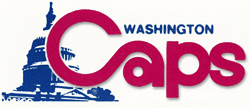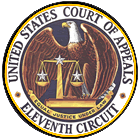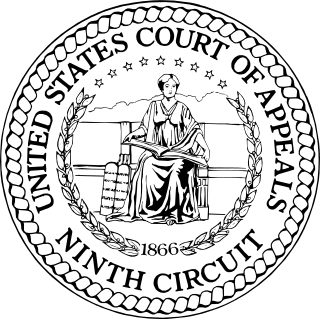
In the United States, antitrust law is a collection of mostly federal laws that govern the conduct and organization of businesses in order to promote economic competition and prevent unjustified monopolies. The three main U.S. antitrust statutes are the Sherman Act of 1890, the Clayton Act of 1914, and the Federal Trade Commission Act of 1914. These acts serve three major functions. First, Section 1 of the Sherman Act prohibits price fixing and the operation of cartels, and prohibits other collusive practices that unreasonably restrain trade. Second, Section 7 of the Clayton Act restricts the mergers and acquisitions of organizations that may substantially lessen competition or tend to create a monopoly. Third, Section 2 of the Sherman Act prohibits monopolization.

The Washington Caps were an American Basketball Association team from 1969 through 1970. The franchise had previously been the Oakland Oaks. From 1970 through 1976 the team played as the Virginia Squires.

Oscar Palmer Robertson, nicknamed "the Big O", is an American former professional basketball player who played for the Cincinnati Royals and Milwaukee Bucks in the National Basketball Association (NBA). Robertson played point guard and was a 12-time All-Star, 11-time member of the All-NBA Team, and one-time winner of the MVP award in 14 seasons. In 1962, he became the first player in NBA history to average a triple-double for a season. In the 1970–71 NBA season, he was a key player on the team that brought the Bucks their first NBA title. His playing career, especially during high school and college, was plagued by racism.

Julius Winfield Erving II, commonly known by the nickname Dr. J, is an American former professional basketball player. Erving helped legitimize the American Basketball Association (ABA), and he was the best-known player in that league when it merged into the National Basketball Association (NBA) after the 1975–1976 season.

Lawrence Francis O'Brien Jr. was an American politician and basketball commissioner. He was one of the United States Democratic Party's leading electoral strategists for more than two decades. He was Postmaster General in the cabinet of President Lyndon Johnson and chair of the Democratic National Committee. O'Brien was also commissioner of the National Basketball Association from 1975 to 1984, and the NBA Championship Trophy is named after him.
The reserve clause, in North American professional sports, was part of a player contract which stated that the rights to players were retained by the team upon the contract's expiration. Players under these contracts were not free to enter into another contract with another team. Once signed to a contract, players could, at the team's discretion, be reassigned, traded, sold, or released.

Smith v. Board of School Commissioners of Mobile County, 827 F.2d 684, was a lawsuit in which the United States Court of Appeals for the Eleventh Circuit held that the Mobile County Public School System could use textbooks which purportedly promoted "secular humanism", characterized by the complainants as a religion.

David O'Neil Thompson, commonly known by the nickname "Skywalker", is an American former professional basketball player. He played with the Denver Nuggets of both the American Basketball Association (ABA) and National Basketball Association (NBA), as well as the Seattle SuperSonics of the NBA. He was previously a star in college for North Carolina State, leading the Wolfpack to its first NCAA championship in 1974. Thompson is one of the ten players to score 70 or more points in an NBA game. He was inducted into the Naismith Basketball Hall of Fame in 1996.

Spencer Haywood is an American former professional basketball player and Olympic gold medalist. Haywood is a member of the Naismith Memorial Basketball Hall of Fame, being inducted in 2015.
The 1970–71 NBA season was the 25th season of the National Basketball Association. The season ended with the Milwaukee Bucks winning the NBA Championship, beating the Baltimore Bullets 4 games to 0 in the NBA Finals. Three new teams made their debut: the Cleveland Cavaliers, the Portland Trail Blazers, and the Buffalo Braves.
Flood v. Kuhn, 407 U.S. 258 (1972), was a decision by the Supreme Court of the United States that preserved the reserve clause in Major League Baseball (MLB) players' contracts. By a 5–3 margin, the Court reaffirmed the antitrust exemption that had been granted to professional baseball in 1922 under Federal Baseball Club v. National League, and previously affirmed by Toolson v. New York Yankees, Inc. in 1953. While the majority believed that baseball's antitrust exemption was anomalous compared to other professional sports, it held that any changes to the exemption should be made through Congress and not the courts.
Radovich v. National Football League (NFL), 352 U.S. 445 (1957), is a U.S. Supreme Court decision ruling that professional football, unlike professional baseball, was subject to antitrust laws. It was the third of three such cases heard by the Court in the 1950s involving the antitrust status of professional sports.
Haywood v. National Basketball Association, 401 U.S. 1204 (1971), was a U.S. Supreme Court decision that ruled against the NBA's requirement that a player could not be drafted by an NBA team until four years after graduating from high school. Justice Douglas, in an in-chambers opinion, allowed Spencer Haywood to play in the NBA temporarily until the litigation could proceed further. The case was settled out of court, Haywood continued playing, and the NBA modified its four-year rule to allow players to enter the league early in cases of "hardship".
The 1976–77 NBA season was the Braves seventh season in the NBA. The Braves were purchased by John Y. Brown, Jr., the former owner of the Kentucky Colonels in the now defunct American Basketball Association for $6.2 million. As part of an agreement with the Braves' former owner, Paul Snyder, Brown would give Snyder money received in player deals to reduce the purchase price. The sell-off began shortly after the season, as the Braves sold newly acquired Moses Malone. Malone was acquired in a trade with the Portland Trail Blazers after the ABA dispersal draft. Malone was now off to the Houston Rockets. The selling of players continued into the season as Bob McAdoo was sold to the New York Knicks. While the deals helped Brown pay virtually nothing for the franchise, it turned a promising franchise into a rebuilding one. Attendance fell off as the Braves finished in 4th place with a 30–52 record. The only spotlight was rookie Adrian Dantley, who captured Rookie of the Year honors with 20.3 points per game. However Dantley himself was traded following the season to the Indiana Pacers for Billy Knight.

Edward Charles O'Bannon Jr. is an American former professional basketball player in the National Basketball Association (NBA). He was a power forward for the UCLA Bruins on their 1995 NCAA championship team. He was selected by the New Jersey Nets with the ninth overall pick of the 1995 NBA draft. After two seasons in the NBA, he continued his professional career for another eight years, mainly playing in Europe.

The ABA–NBA merger was a major pro sports business maneuver in 1976 when the American Basketball Association (ABA) combined with the National Basketball Association (NBA), after multiple attempts over several years. The NBA and ABA had entered merger talks as early as 1970, but an antitrust suit filed by the head of the NBA players union, Robertson v. National Basketball Ass'n, blocked the merger until 1976.
Illinois Brick Co. v. Illinois, 431 U.S. 720 (1977), is a United States Supreme Court case that involved issues concerning statutory standing in antitrust law.
Jeffrey L. Kessler is an American attorney who is a partner and co-executive chairman of Winston & Strawn. He is also co-chair of the firm's antitrust/competition practice and is a member of the executive committee. He is one of the country's leading sports lawyers.

O'Bannon v. NCAA, 802 F.3d 1049, was an antitrust class action lawsuit filed against the National Collegiate Athletic Association (NCAA). The lawsuit, which former UCLA basketball player Ed O'Bannon filed on behalf of the NCAA's Division I football and men's basketball players, challenged the organization's use of the images and the likenesses of its former student athletes for commercial purposes. The suit argued that upon graduation, a former student athlete should become entitled to financial compensation for NCAA's commercial uses of their image. The NCAA maintained that paying its athletes would be a violation of its concept of amateurism in sports. At stake are "billions of dollars in television revenues and licensing fees."
The NBA–ABA All-Star Game was an exhibition basketball match organized by the players associations of the National Basketball Association (NBA) and American Basketball Association (ABA) where a selection of the best players from each league played in a game against each other. The players organized the all-star game against the wishes of the owners, who refused any interleague play without a merger of the leagues. Billed as a "Supergame", it was held in 1971 and 1972. Another game was originally scheduled to be played in 1974, until the NBA won a binding arbitration blocking their players from participating.











